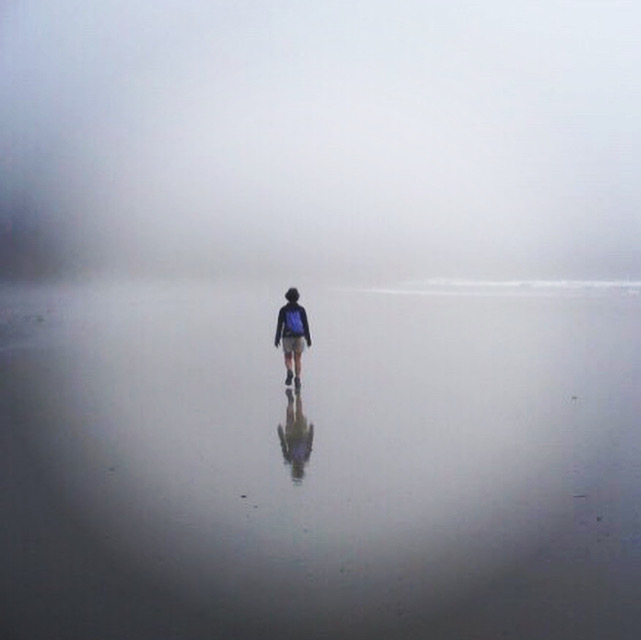Archetypes and ancestors began to increasingly make their appearance in my psychotherapy sessions with the onset of the coronavirus pandemic and early stages of the global quarantine lockdown. At first, I simply took note. I had begun to do some ancestral healing work myself and wondered if I was simply more attuned to such matters. But soon it became too much of a coincidence. Almost every session featured some archetypal presence, and clients were asking to work specifically on transgenerational traumas, understanding that trauma can alter our DNA and that these gene alterations are passed on through several generations.
It dawned on me that this urgency in clients, and the appearance of archetypal or ancestral aides in their healing, may be generated by what I can only term a planetary near-death experience (NDE). In The Neurology of Consciousness, NDEs are described as subjective phenomena that occur during life-threatening events. These may include out-of-body experiences as well as encounters with spiritual beings—sometimes blissful, sometimes terrifying. People have reported having NDEs after heart attacks, difficult surgeries, near drownings, electrocutions, terminal illness, near-fatal vehicle accidents, combat injuries and comas due to illness or injury. A common denominator in NDEs is breathing interruption leading to organ failure, particularly brain function.
Here are a few of the reasons 2020 is exposing us to a planetary and collective NDE:
- At the time of this writing, SARS-CoV-2 or COVID-19 has infected nearly 25 million people and killed almost 850,000 people worldwide – nearly 6 million infected and more than 180,000 dead in the United States alone – and growing exponentially each day. Where governments are mishandling the public health response to an invisible threat, citizens are figuratively “holding their breath” in anticipation of an infection—aware that going to an ICU and being on a ventilator can have severe psychological impacts, like delirium and psychosis, with many patients experiencing post-ICU PTSD.
- The murder of black American George Floyd at the hands of white police in Minneapolis has unleashed a cultural uprising that has propelled the United States to the brink of a civil war, exposing the ever-widening fractures caused by police brutality, white supremacy and racism in America. Those 8 minutes and 46 seconds Mr. Floyd had a knee on his neck and couldn’t breathe led us all to recognize how oppression has entire swaths of our society in a near-death state of “I Can’t Breathe.”
- The United States economy reached a peak in February (after 128 months of expansion since the 2008-2009 recession ended) and has since plunged into a recession, with the unemployment rate jumping to 14.7% in April, massive rates of evictions expected in the Fall, and more than 30 million Americans reporting going hungry and not having enough to eat in a recent survey (that’s nearly 10% of the population in the richest nation on Earth).
- The climate crisis is seeing exponential worsening in the last year, with the Arctic reaching temperatures of 100 degrees, massive fires and rapid melting of the ice shelf. In a history-making event, two hurricanes developed simultaneously in the Gulf of Mexico with one devastating Louisiana with 150 mph winds. Scientists wonder if 2020 is our last best chance to save the planet. After all, some are already predicting a sixth extinction period on Earth.
What can we do about this planetary near-death experience and the ever-growing threat of extinction? Ideally, be aware and educate yourself about how you might be experiencing symptoms of personal and collective trauma, as well as how you might access resilience and contribute to the collective healing.
In his upcoming book, Healing Collective Trauma, Thomas Hubl explains that “the consequences of trauma—indeed, the cumulative effects of personal, familial, and historical traumas—seep across communities, regions, lands, and nations…trauma’s legacy weaves and wires our very world, informing how we live in it, how we see it, and how we see and understand one another. Many of us are aware of the manifest ways that unhealed trauma can create long-term personal pain and developmental problems for individuals. What is perhaps less well understood is how unhealed collective trauma may place similar burdens on the health of human cultures and societies, even placing our planetary home at risk.”
Given the role of the breath in near-death experiences, here are some things you can do:
- Notice how you are breathing. Pause multiple times a day to observe your breath until it becomes rhythmic, smooth, and even. Focus on completing the exhale so the inhale is naturally deeper and more nourishing.
- Learn breathing techniques from qualified yoga instructors. Intelligent pranayama has physical, mental, emotional and energetic healing effects – emptying you of stressful thoughts and emotions or bathing your body and mind in positivity.
- Reach out to supportive friends and family, healers, and therapists to process the emotions that are being held back by the constriction. There’s a reason we’re holding our breath, and we must be ready for the wave of thoughts, images and emotions that may flow when we start expanding our breath.
- Create “communities of care” in which members of a support community look out for one another. Even self-care is too much pressure on any one individual when the threats are systemic. Check out Dr. Gail Parker’s new book, Restorative Yoga for Ethnic and Race-based Trauma.
Additionally, you may find that the following strategies are helpful:
- Witness your inner experience with benign, loving presence, staying in the present moment, and orienting to people and places that evoke relative safety. Relish the sense of safety and protection bodily, when it is available.
- Practice Yoga Nidra to learn to track states of consciousness between asleep and awake; people with NDEs may experience sleep flooded with images; and when awake, may be falling asleep or groggy. Just notice and begin to soften the transitions.
- Notice breaks in the fabric of consciousness – you may feel woozy, dreamy, or absent-minded. There is nothing to be afraid of. Just notice how you feel and how you shift back into presence and embodiment.
- Become aware of the polarities of constriction and expansion, the beatific and the hellish, the terror and the bliss, the yin and the yang that may arise as you navigate these strange global times. Remember that you are not alone. All of humanity is in the same boat.
- Be aware of the mythopoetic realm, a creative state of mind giving rise to myths. Learn about archetypes. Identify your superpowers, heroes, heroines, angels, ancestors, aids, and helpers—real or imagined. Work with your dreams. Engage in therapeutic writing; write poetry and lyrics. Draw and paint stream of consciousness.
Above all, seek professional help from a licensed mental health professional who is trained in healing trauma multi-dimensionally (body, mind, spirit), and if possible, understands how to work with near-death experiences. Any close brush with death reminds us of the fragility of life, opening our psyche up to face long-suppressed existential fears and question our life’s meaning and purpose. If each one of us heals our unhealed trauma, we will be contributing to the collective healing of our communities, cities, nations and the planet – as well as the evolution of humanity. As Richard Rohr says, “pain that is not transformed, is transmitted.” If we are to survive as a species, we need to stop transmitting pain to one another and enacting and re-enacting traumatic material. In the words of evolutionary biologist Edward O. Wilson, “Out of an ethic of simple decency to one another, the unrelenting application of reason, and acceptance of what we truly are, we may yet turn earth into a permanent paradise for human beings, or the strong beginnings of one.”












Read 0 comments and reply